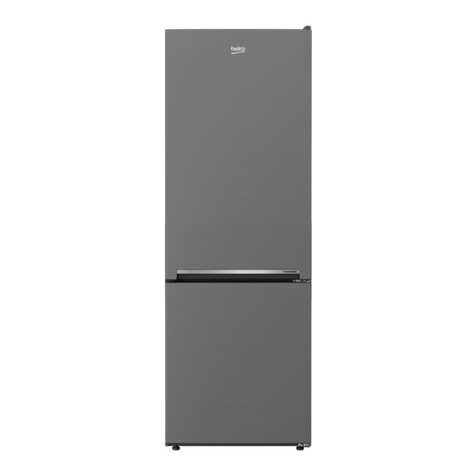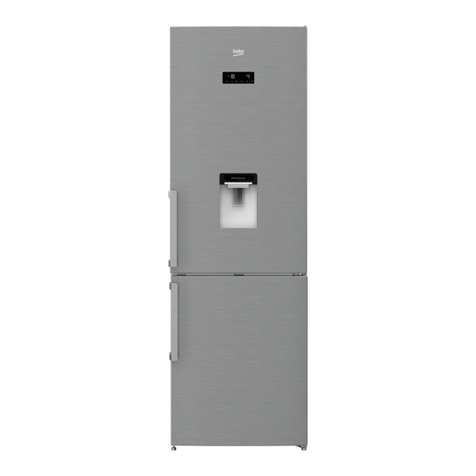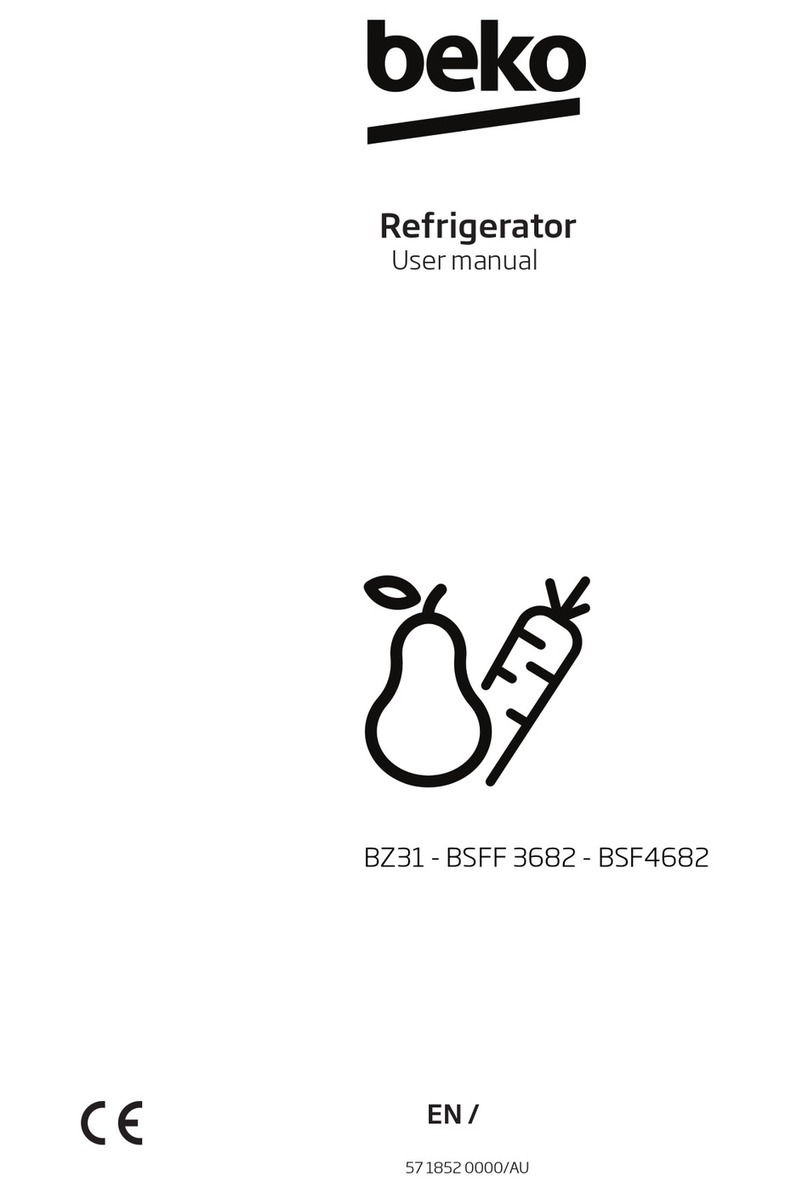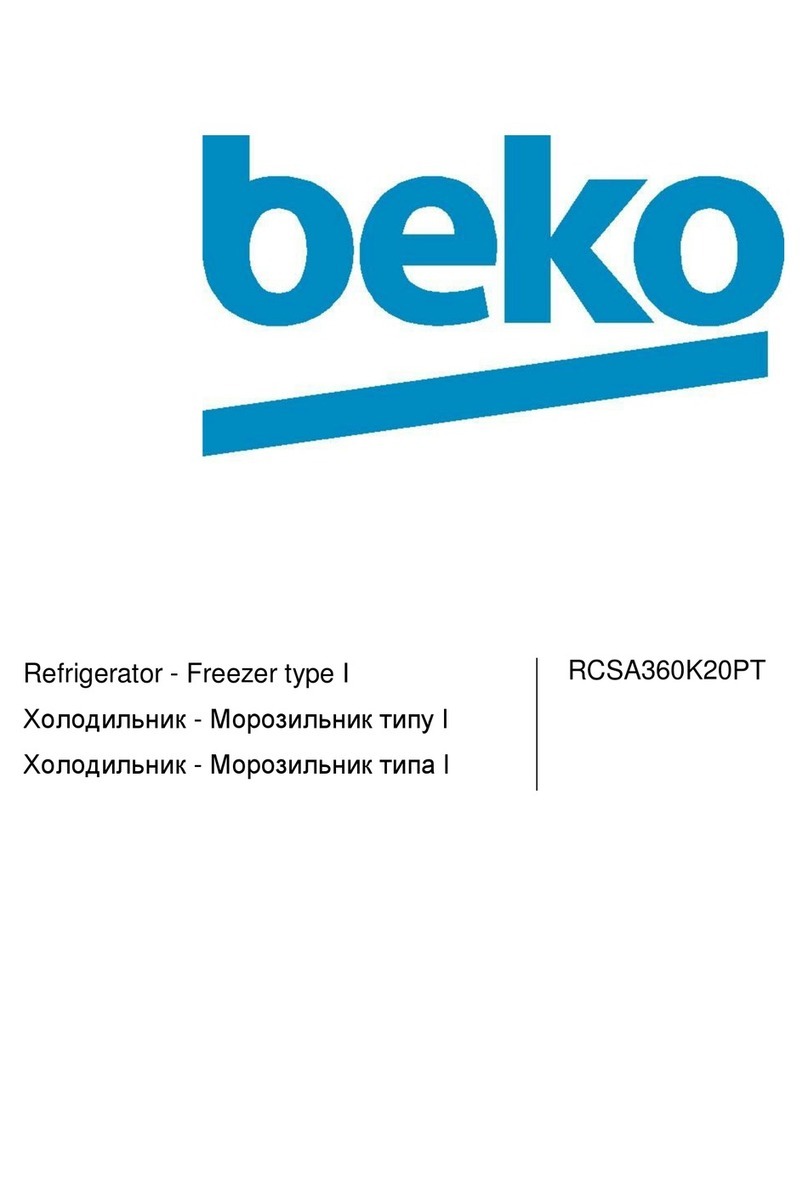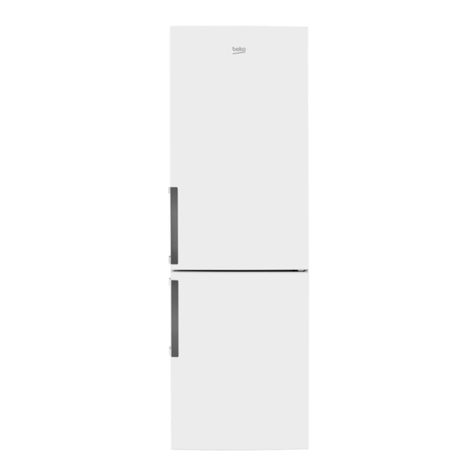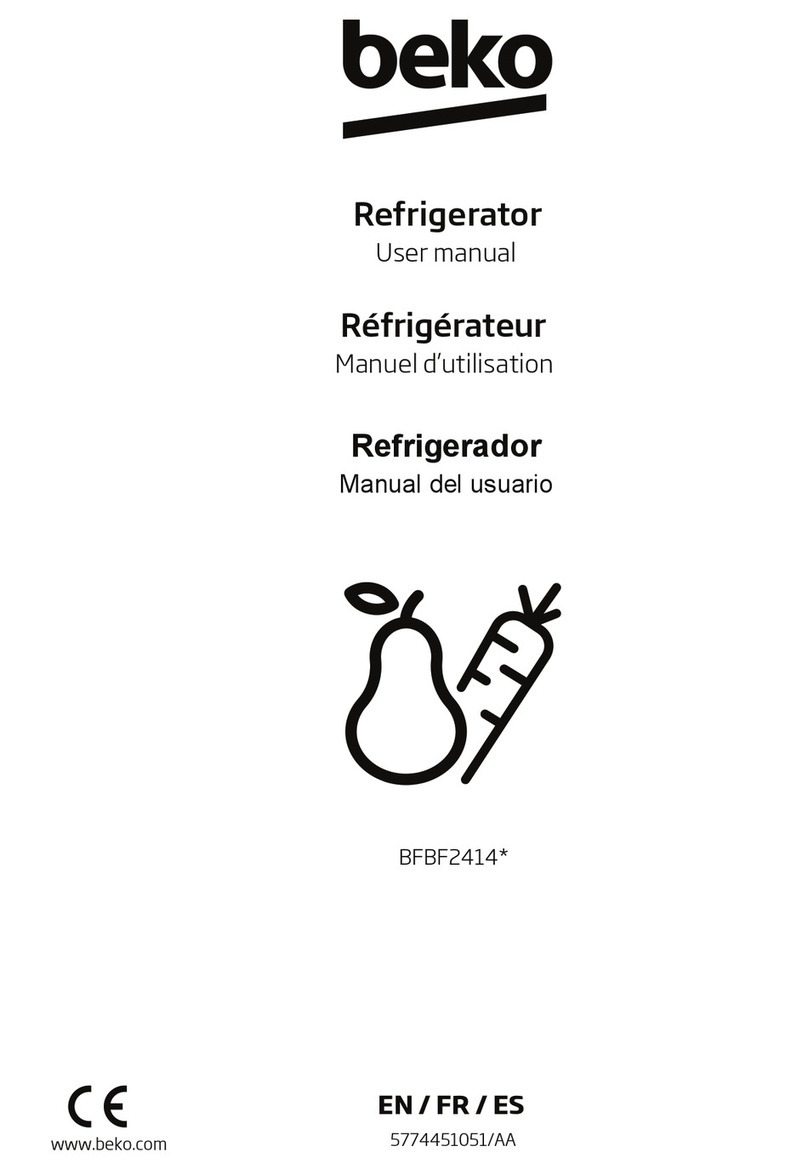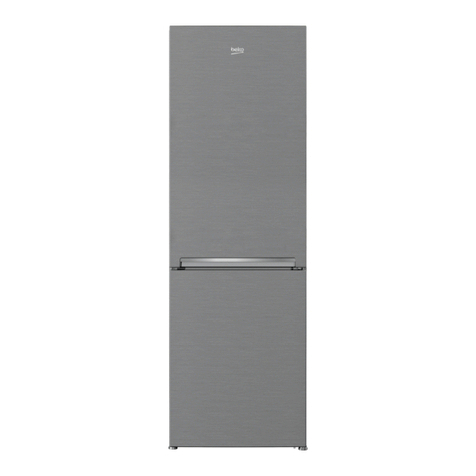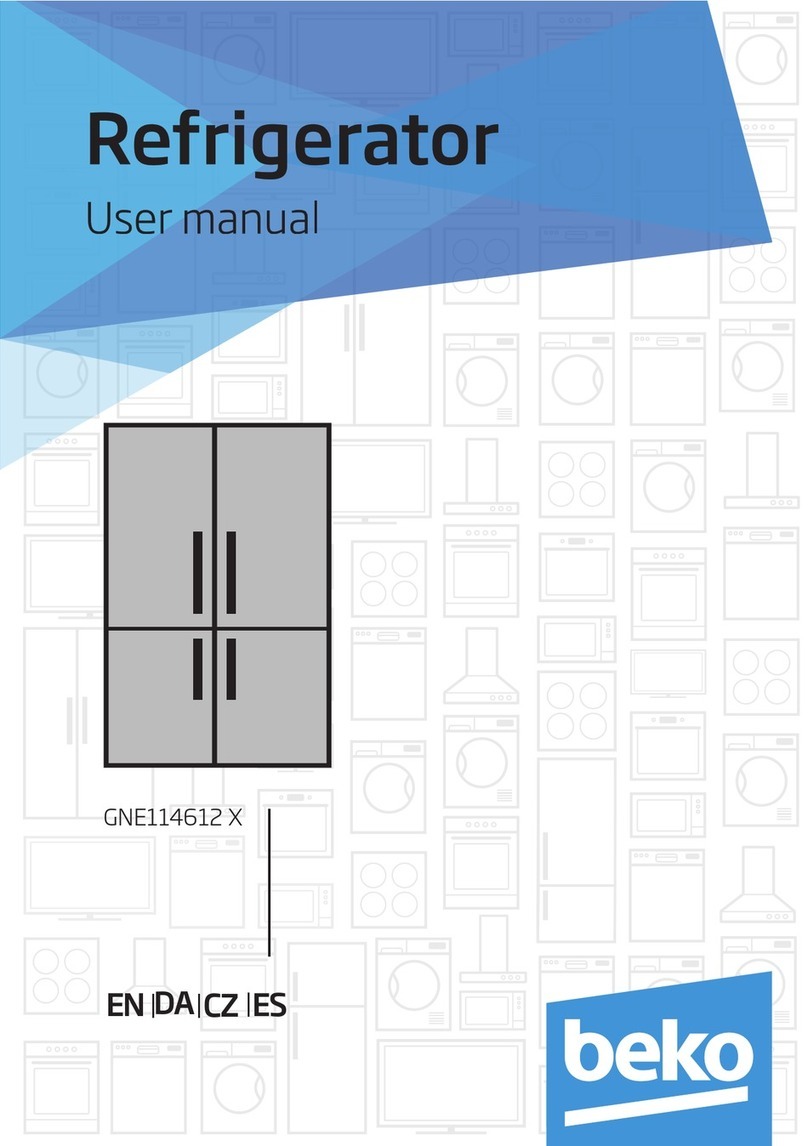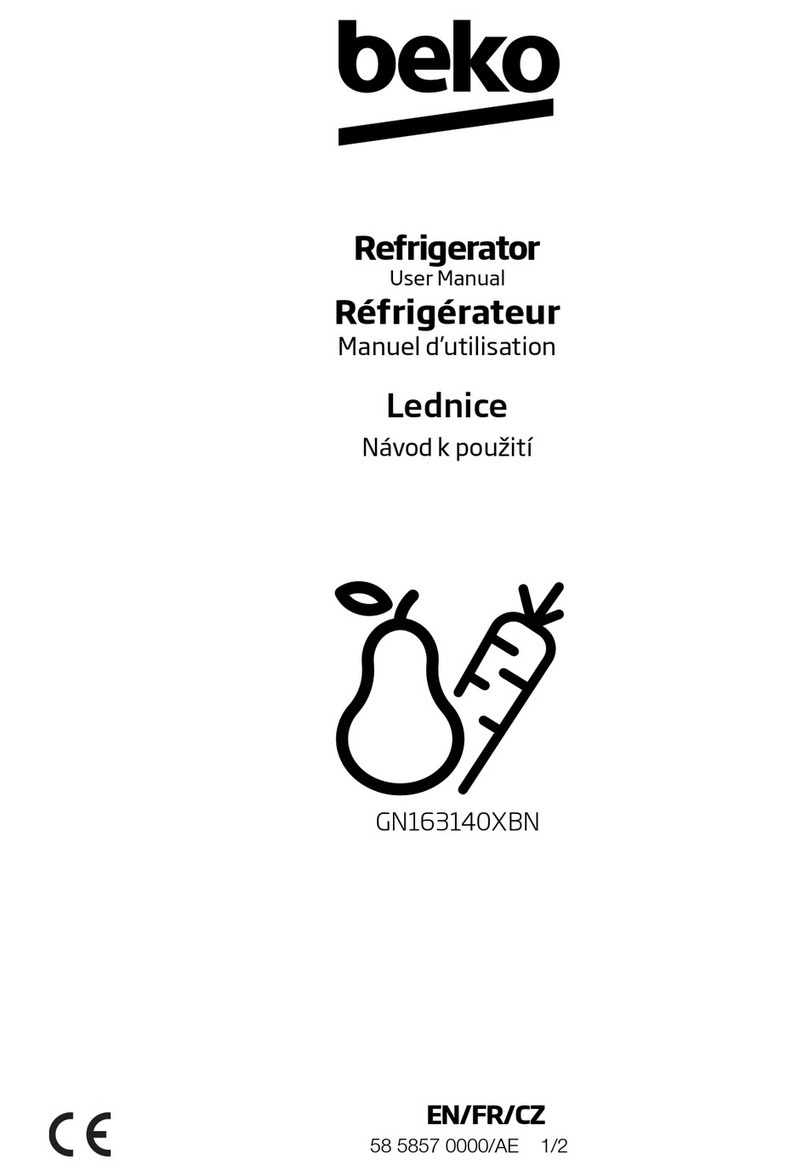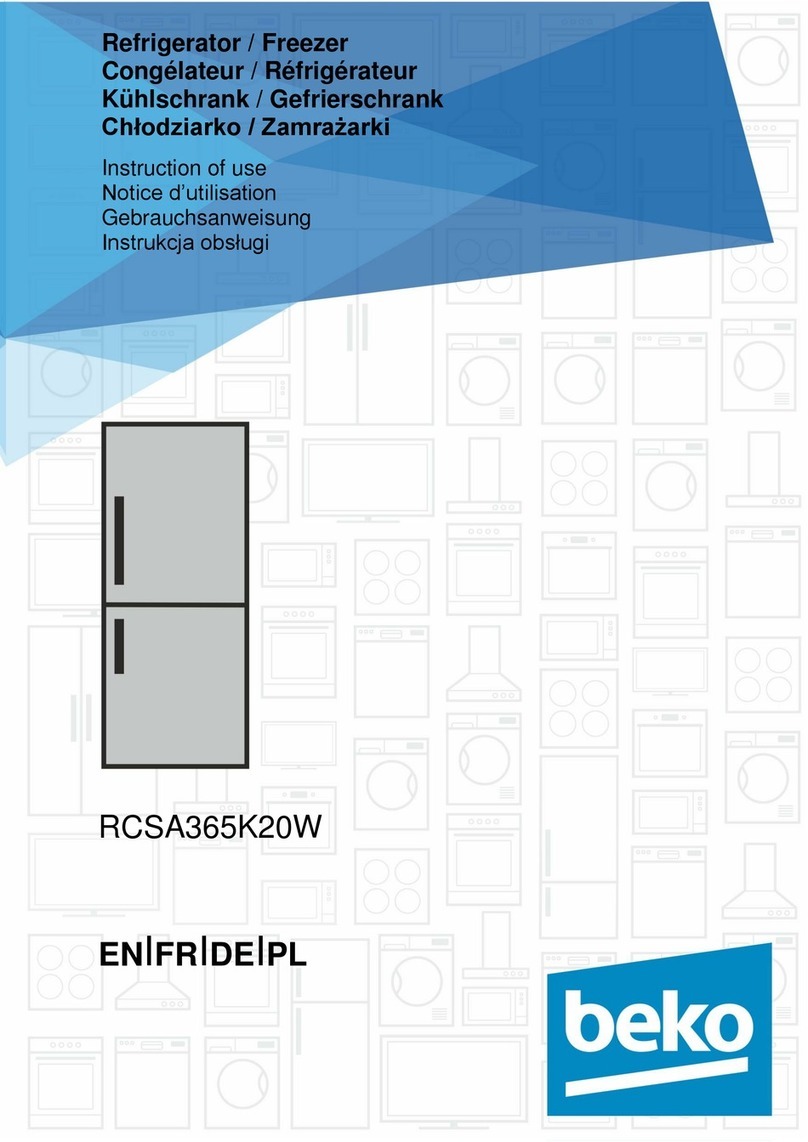
4 EN
Please review the following
information. Failure to observe this
information may cause injuries or
material damage. Otherwise, all
warranty and reliability commitments
will become invalid.
Original Spare parts will be provided
for 10 years, following the product
purchasing date.
Intended use
This product is intended to be used
• indoors and in closed areas such as
homes;
• in closed working environments
such as stores and offices;
• in closed accommodation areas
such as farm houses, hotels,
pensions.
• It should not be used outdoors.
General safety
• When you want to dispose/scrap
the product, we recommend you to
consult the authorized service in
order to learn the required
information and authorized bodies.
• Consult your authorized service for
all your questions and problems
related to the refrigerator. Do not
intervene or let someone intervene
to the refrigerator without notifying
the authorised services.
• For products with a freezer
compartment; Do not eat cone ice
cream and ice cubes immediately
after you take them out of the
freezer compartment! (This may
cause frostbite in your mouth.)
•For products with a freezer
compartment; Do not put bottled
and canned liquid beverages in the
freezer compartment. Otherwise,
these may burst.
• Do not touch frozen food by hand;
they may stick to your hand.
• Unplug your refrigerator before
cleaning or defrosting.
• Vapor and vaporized cleaning
materials should never be used in
cleaning and defrosting processes
of your refrigerator. In such cases,
the vapor may get in contact with
the electrical parts and cause short
circuit or electric shock.
• Never use the parts on your
refrigerator such as the door as a
means of support or step.
• Do not use electrical devices inside
the refrigerator.
• Do not damage the parts, where the
refrigerant is circulating, with drilling
or cutting tools. The refrigerant that
might blow out when the gas
channels of the evaporator, pipe
extensions or surface coatings are
punctured causes skin irritations and
eye injuries.
• Do not cover or block the ventilation
holes on your refrigerator with any
material.
• Electrical devices must be repaired
by only authorised persons. Repairs
performed by incompetent persons
create a risk for the user.
•In case of any failure or during
a maintenance or repair work,
disconnect your refrigerator’s mains
supply by either turning off the
relevant fuse or unplugging your
appliance.
•Do not pull by the cable when
pulling off the plug.
•Place the beverage with higher
proofs tightly closed and vertically.
•Never store spray cans containing
flammable and explosive
substances in the refrigerator.
2 Important Safety Warnings
